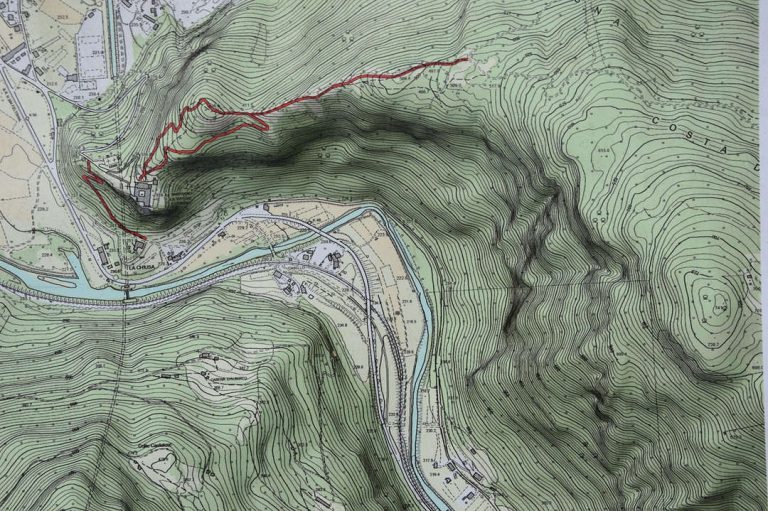What is Backfilling in Construction?
Have you ever wondered what happens to all the dirt excavated when laying a foundation? The answer is backfilling, a crucial step in construction that goes beyond simply filling a hole.
Backfilling involves carefully selecting and compacting material around the foundation to create a stable and supportive environment.
This process plays a vital role in the long-term health of your structure, protecting it from shifting soil, water damage, and other environmental threats.
Throughout this guide, we'll delve deeper into the world of backfilling, exploring the different materials used, their impact on your project's success, and the importance of proper installation for a strong and lasting foundation.
What is Backfilling?
Backfilling is the process of strategically refilling an excavated area with suitable materials, typically after a foundation, trench, or other structure has been built. This involves placing the material in layers and compacting it to achieve a dense and stable fill.
The compacted backfill material provides crucial support for the surrounding structure, preventing it from shifting or settling due to loose soil or environmental pressures.
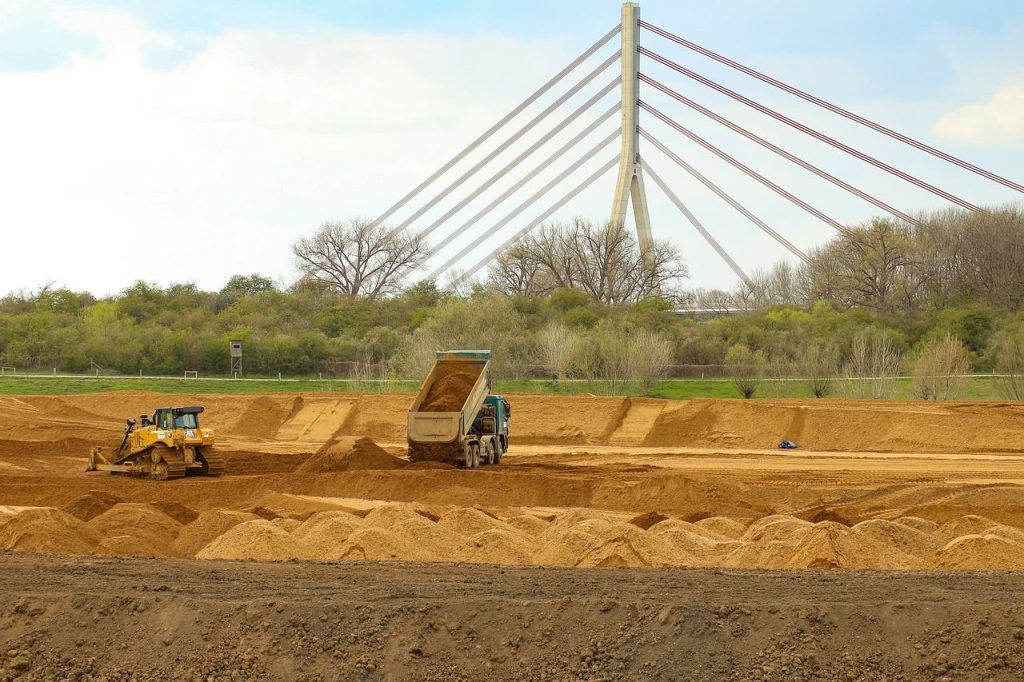
Purposes of Backfilling in Construction
Backfilling serves several critical purposes in construction, ensuring the overall strength and functionality of the project. Here are the key benefits:
Structural Support: Proper backfilling offers crucial lateral support to foundations and retaining walls, preventing shifting or cracking by buffering against external soil pressure.
Thermal Insulation: The backfilled soil acts as a natural insulator, regulating indoor temperatures by minimizing heat loss in winter and heat gain in summer. This leads to a more energy-efficient and comfortable building.
Adequate Drainage: Compacted backfill directs water away from the foundation, preventing water infiltration and accumulation, which reduces the risk of settlement, erosion, and related issues caused by excess moisture.
Site Restoration: Backfilling restores excavated areas to their original state or planned grade, enhancing the construction site's aesthetics and creating a safe environment for ongoing or future landscaping projects.
Factors Affecting Backfilling in Foundation
Backfilling a foundation is a crucial step in construction, and several factors come into play to ensure it's done correctly. Here's a detailed breakdown of the key aspects that influence successful foundation backfilling:
Choosing the Right Backfill Material
Selecting the most suitable backfill material is crucial for creating a strong and supportive environment around the foundation.
Ideally, the backfill material should be similar to the native soil surrounding the foundation. This ensures compatibility and minimizes the risk of differential settlement (uneven sinking), which could lead to sinkhole formation between the foundation and surrounding soil.
However, if the native soil is poor quality (e.g., clay with high shrink-swell potential), engineered fill materials like crushed stone or controlled low-strength material (CLSM) might be necessary.
Compacting the Backfill Material
Compaction minimizes air pockets within the backfill, preventing excessive settlement of the foundation over time. A well-compacted backfill ensures a solid and uniform base for the structure.
The compaction process increases the density of the backfill material, enhancing its ability to support the weight of the building.
Compaction helps to create a more uniform fill, allowing water to flow through the backfill material more efficiently and reducing the risk of water pooling around the foundation.
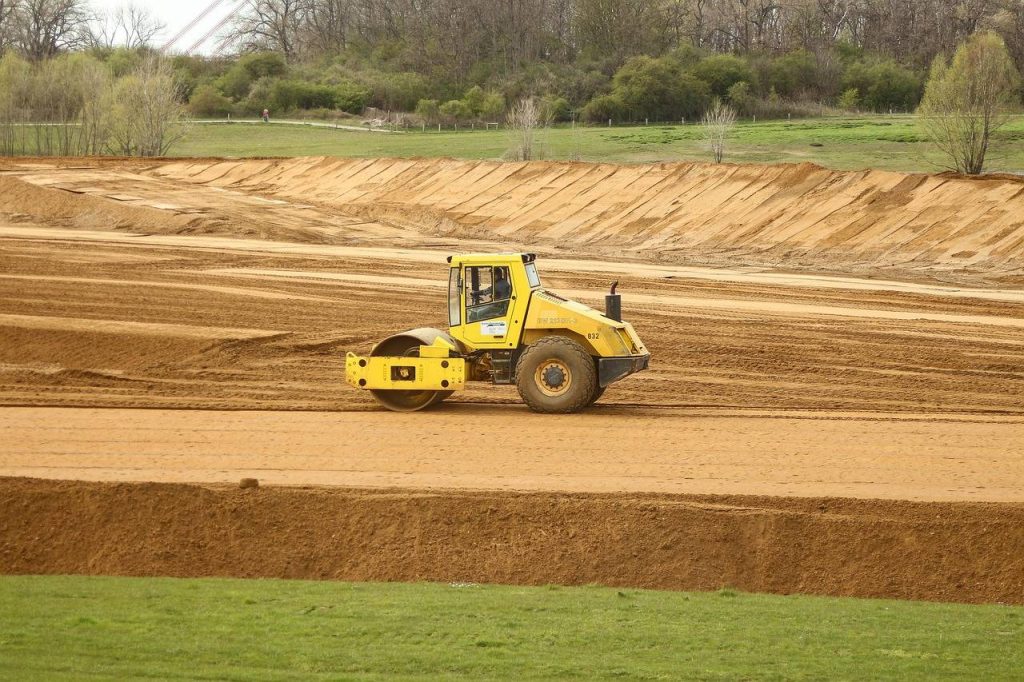
Period of Backfilling and Lift Thickness
Backfilling should be done in stages, ensuring proper compaction of each layer before adding the next. The ideal thickness of each backfill layer depends on the material being used.
Generally, for soil, layers should be between 6 and 12 inches thick. For gravel and sand, layers can be 3 to 6 inches thick, while crushed stone layers should be 2 to 4 inches thick. Following these recommended layer thicknesses allows for effective compaction throughout the backfill zone.
What Materials Are Used For Backfilling?
The choice of material for backfilling a foundation depends on several factors, but some of the most common options include:
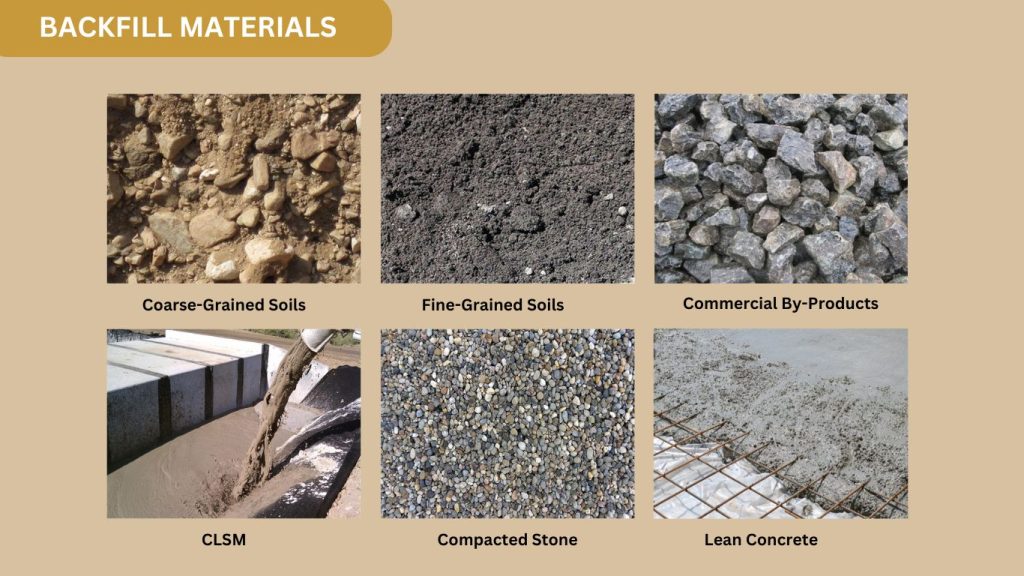
Coarse-Grained Soils
Coarse-grained soils consist of sand, gravel, or a combination of both, with minimal fines (clay or silt particles).
These materials offer excellent drainage capabilities, allowing water to percolate freely. They are also readily compactable and provide good load-bearing capacity when properly compacted.
Coarse-grained soils are a popular choice for backfilling foundations due to their drainage properties. Well-graded gravel or a mixture of sand and gravel can be ideal for most foundation backfilling projects.
However, their suitability may be limited in regions with expansive soils or where very high load-bearing capacity is required.
Fine-Grained Soils of Low to Medium Plasticity
Fine-grained soils consist of silts and very fine sands, with a higher proportion of fines compared to coarse-grained soils.
Fine-grained soils offer lower drainage capabilities compared to coarse-grained soils. They can be challenging to compact effectively, and their load-bearing capacity can vary depending on the clay content and plasticity.
While generally less preferred than coarse-grained soils for foundation backfill due to drainage concerns, fine-grained soils with low to medium plasticity might be suitable in specific situations.
For example, if the native soil is primarily composed of low-plasticity clays and proper drainage solutions are implemented around the foundation, using the excavated material for backfill might be an option.
Commercial By-Products
These materials encompass recycled or by-products from industrial processes that can be utilized as backfill material. Examples include furnace slag (a byproduct of steel production) and fly ash (a byproduct of coal combustion).
The properties of commercial by-products can vary depending on the specific material. Some by-products may offer good drainage and load-bearing capacity, while others might require stabilization techniques before use.
Commercial by-products can be a cost-effective and environmentally friendly option for backfill, especially when locally available. However, their suitability depends on the specific product, project requirements, and local building codes. Testing and engineering evaluations are often necessary to determine if a particular by-product is appropriate for backfilling.
Controlled Low-Strength Material (CLSM)
CLSM is a self-compacting, low-strength cementitious material specifically designed for use in backfilling applications. It typically consists of a mixture of water, cement, fly ash, and either fine or coarse aggregates (or both).
CLSM offers several advantages over traditional compacted soils. It is self-compacting, eliminating the need for heavy compaction equipment, and provides a consistent and uniform fill with minimal settlement potential.
It is a good choice for backfilling applications where precise control over the fill material is desired, such as around utilities or in confined spaces. It can also be beneficial in situations where traditional compaction methods are difficult to implement.
Compacted Stone
Compacted stone typically refers to crushed stone or recycled concrete aggregates that have been mechanically compacted to achieve a high density. It offers excellent drainage capabilities and superior load-bearing capacity. It is a highly stable and predictable material for backfilling.
In many situations, compacted stone is a preferred choice for foundation backfill. It provides excellent drainage, minimizes the risk of settlement, and offers superior load-bearing capacity for supporting the structure.
Lean Concrete
Lean concrete is a low-strength concrete mix with a lower cement content compared to structural concrete. It can be used for backfilling applications in specific scenarios.
This group offers a very stable and rigid backfill material with high load-bearing capacity. However, it is also the most expensive option on this list and may not be necessary for all foundation backfilling projects.
Lean concrete might be used for backfilling in specific situations requiring exceptional stability or load-bearing capacity, such as retaining wall applications. However, due to its cost and lack of flexibility, it's not a common choice for typical foundation backfilling.
Types of Equipment for Backfilling
Backfilling operations involve a variety of equipment, each playing a crucial role in efficiently and effectively placing and compacting the backfill material. Here's a breakdown of the essential backfilling equipment and their functionalities:
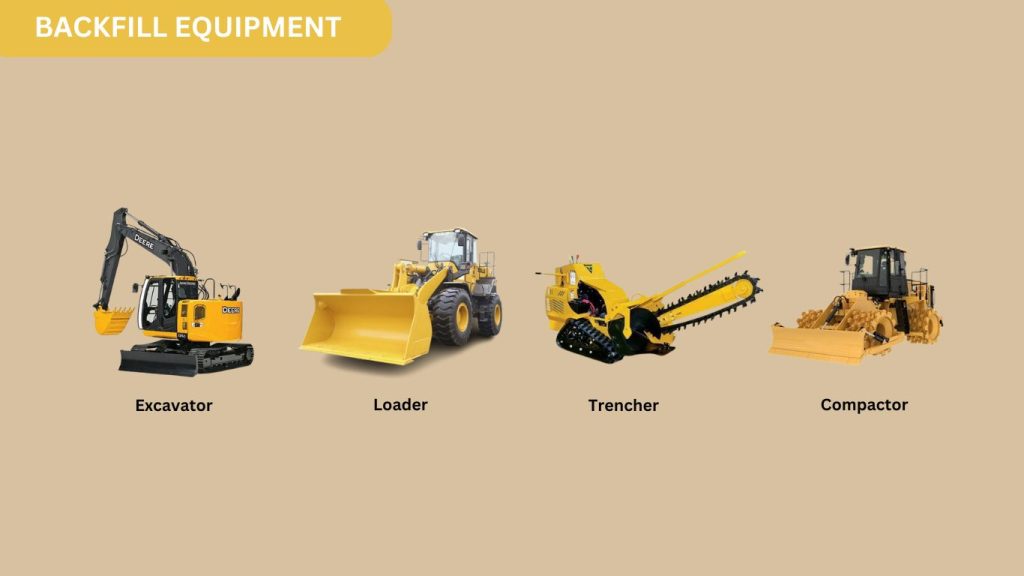
Excavators
These versatile machines are often used for both excavation and backfilling tasks. They feature a hydraulic arm with a bucket attachment on one end and a counterweight on the other for stability.
The excavator's bucket can be used to precisely place backfill material into the designated area around the foundation or trench. Its reach allows for easy maneuvering and placement, even in tight spaces.
With careful manipulation of the bucket, the excavator can help spread and level the backfill material in layers, preparing it for compaction.
Loaders
Loaders are wheeled or tracked machines equipped with a front-mounted bucket for loading, transporting, and dumping materials.
Loaders excel at transporting large quantities of backfill material from stockpiles to the backfilling area. Their capacity allows for efficient movement of materials, minimizing manual labor.
The loader bucket can be used to dump backfill material in controlled piles, assisting with initial placement and distribution around the foundation. Some loaders even have features for limited material spreading.
Trenchers
Trenchers are specialized machines designed for excavating long, narrow trenches for utility lines, drainage pipes, or other underground installations.
While primarily used for excavation, trenchers can also be helpful for backfilling trenches in specific situations. Depending on the size and capabilities of the trencher, it might be able to directly place backfill material into the trench as it excavates the opposite side.
However, this is typically only suitable for smaller trenches and might require additional equipment for compaction.
Compactors
Compactors are essential pieces of equipment used to densify and solidify backfill material. They come in various types, each suited for different project sizes and materials.
- Hand Tampers: These handheld devices are suitable for compacting small areas or confined spaces. They are typically powered by a gasoline engine and deliver impacts to the material through a vibrating plate.
- Plate Compactors: These walk-behind or ride-on machines utilize a vibrating base plate to compact backfill material. They are more efficient than hand tampers and suitable for medium-sized areas with granular materials like crushed stone or sand.
- Roller Compactors: These large, self-propelled machines are ideal for large-scale backfilling projects. They come in various drum configurations (smooth or vibratory) and offer superior compaction capabilities for extensive areas with different materials.
Choosing the Right Backfilling Equipment:
The selection of backfilling equipment depends on several factors:
- Project Size and Scope: For small residential projects, a combination of an excavator and a hand tamper might suffice. Larger commercial projects might require loaders, multiple compactor types, and even specialized equipment depending on the backfill material and site conditions.
- Material Type: Granular materials like crushed stone might be manageable with a plate compactor, while cohesive soils like clay might require a more powerful roller compactor for proper densification.
- Accessibility: Consider the accessibility of the backfilling area. For tight spaces, a smaller excavator or a hand tamper might be necessary, while open areas can accommodate larger loaders and roller compactors.
Backfilling Methods
Before diving into the process, choose the backfilling method that best suits your project needs and material selection. Here are the common methods to consider:
Compacting
This is the most effective and widely used method. It involves placing the backfill material in layers, typically 4-6 inches thick, and then compacting each layer thoroughly before adding the next. This process is repeated until the desired grade level is achieved.
Compaction equipment like rammers, plate compactors, or roller compactors are used depending on the material type. While it requires more equipment and time, compacted backfill offers superior stability and reduces the risk of future settlement.
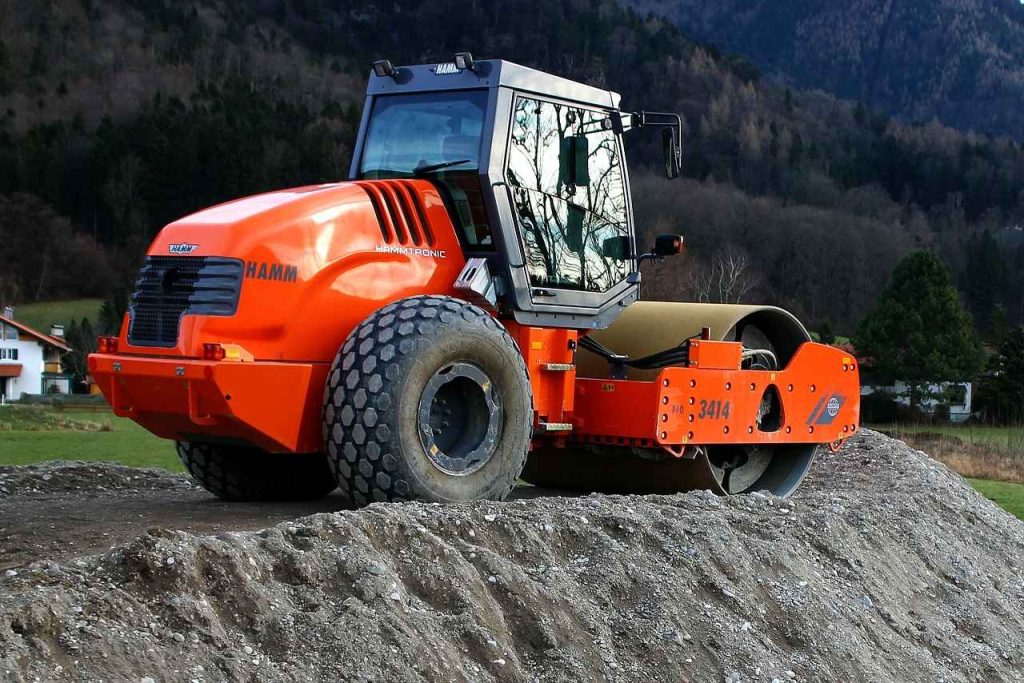
Water Jetting
This method utilizes pressurized water jets to compact loose granular materials like sand or gravel placed in the trench. The water jet stream forces the particles closer together, achieving a denser fill.
This method is efficient for specific situations but requires proper drainage of the water after application. Water jetting is not suitable for cohesive soils like clay.
Filling
This method involves pouring flowable fill concrete, a slurry mixture of cement, water, fly ash, and fine aggregate, directly into the trench. Filling is a quick option for narrow spaces where heavy machinery cannot be used for compaction. However, it requires careful containment to prevent the fill from flowing into undesired areas.
Dumping
This is the simplest and least expensive method, but it's not recommended for most projects due to its drawbacks. Dumping involves simply filling the trench with loose granular material like sand or soil. This method offers minimal support and can allow fine materials to migrate through the backfill, potentially leading to future problems.
Factors to Consider When Choosing a Backfilling Method:
- Project Requirements: Consider the desired level of stability and support needed for the structure. Compacting offers the most robust solution, while dumping might be suitable for temporary applications.
- Backfill Material: The type of backfill material will influence the choice of method. Compacting is suitable for most materials, while water jetting is specifically for granular materials. Flowable fill requires the filling method.
- Site Accessibility: For narrow spaces, consider methods like filling or water jetting that don't require large compaction equipment.
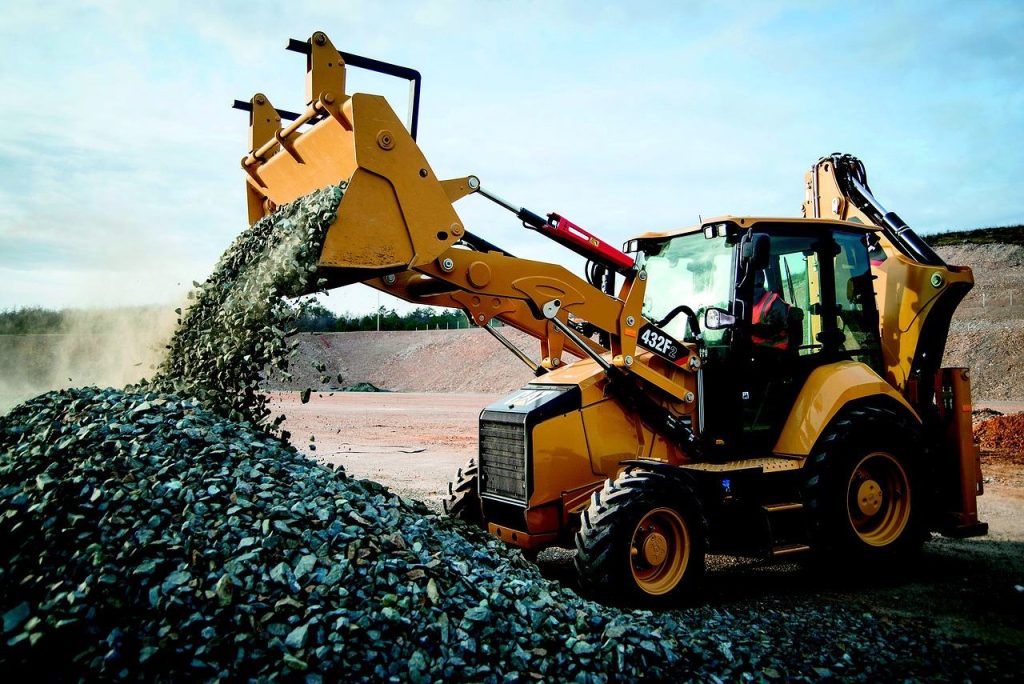
What is the Backfilling Process?
Here are the key steps involved in the backfilling procedure:
1. Scheduling and Preparation:
- Backfilling Method: Choosing the right method depends on the backfill material, project scale, and budget. (We've explore common methods in a previous section)
- Backfill Material Selection: Selecting the most appropriate backfill material is vital for foundation stability. (A detailed discussion on backfill materials is covered in a previous section)
- Equipment Rental: Based on the chosen method and material, the necessary equipment needs to be rented. (A detailed discussion on backfill equipment is covered in a previous section)

2. Backfilling Execution:
- Trench Preparation (if applicable): For trench backfilling, any standing water or debris needs to be removed from the trench before backfilling begins.
- Backfilling in Lifts: The backfill material is placed in designated areas in stages called "lifts." The recommended lift thickness varies depending on the material; typically, 4-6 inches works well for most materials.
- Compaction after Each Lift: After each lift of backfill material is placed, it needs to be thoroughly compacted using appropriate equipment. This ensures a dense and stable fill with minimal settlement potential.
- Ensuring Proper Drainage: For foundation backfilling, it's crucial to maintain proper drainage around the structure. This might involve sloping the backfill material away from the foundation or installing drainage systems like pipes or ditches to direct water away from the foundation walls.
3. Final Touches:
- Leveling and Finishing: Once the backfilling reaches the desired grade level, the final layer is smoothed and leveled to create a uniform surface.
- Cleaning Up: After backfilling is complete, the work area should be cleaned up, removing any excess material or debris.
The Future of Backfilling: Drone Technology and Aerial Analytics
Traditional backfilling methods, while effective, have limitations. These methods often rely on manual measurements of the excavation area to estimate the required backfill material. This approach can be prone to human error, leading to inaccurate material estimates and potential cost overruns or material shortages.
Additionally, traditional methods often involve workers manually checking the backfill for unevenness, which can be time-consuming and expose them to potential hazards in the work area, such as:
- Trench Collapse and Cave-ins: Improper excavation techniques or loose soil conditions can lead to unstable trenches and cave-ins, potentially burying or injuring workers.
- Falling Objects: Objects or tools falling from above during backfilling can cause injuries.
- Slips, Trips, and Falls: Uneven terrain, loose materials, and poor housekeeping practices can increase the risk of slips, trips, and falls.
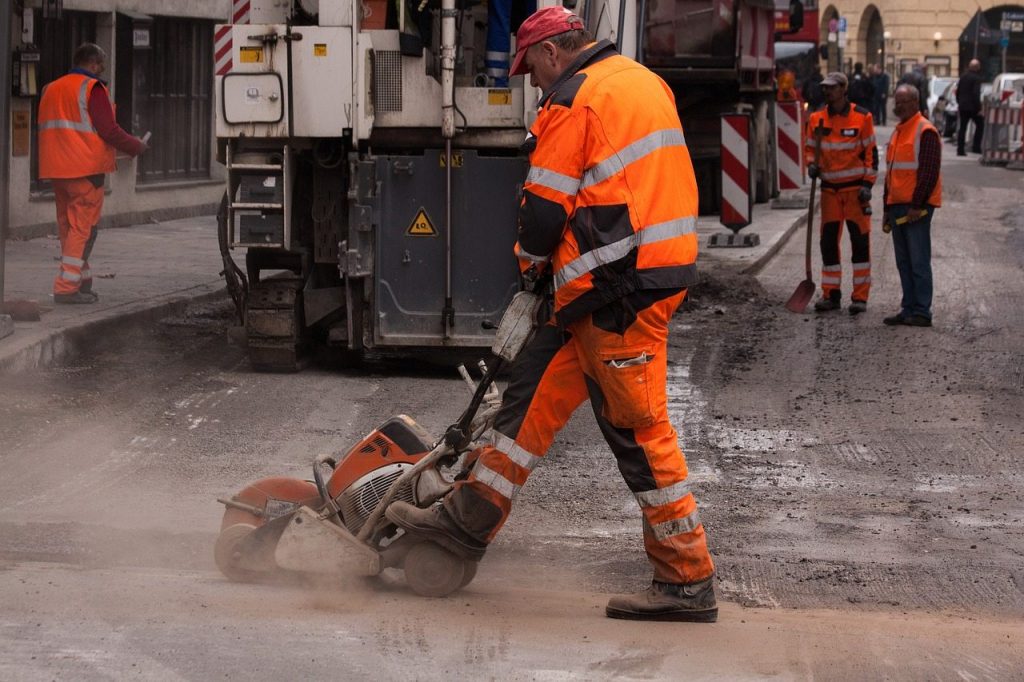
How Drones are Revolutionizing Backfilling?
However, the future of backfilling is looking bright with the integration of drone technology and aerial analytics. Drones are revolutionizing the construction industry, and backfilling is no exception. These unmanned aerial vehicles (UAVs) equipped with specialized software offer a game-changing approach to backfilling with significant benefits.
- High-Resolution Aerial Imagery: Drones equipped with high-definition cameras can capture comprehensive aerial photographs of the backfill area. These detailed images provide a valuable bird's-eye view, facilitating better visualization of progress, identification of potential issues, and overall project oversight.
- 3D Modeling for Accurate Calculations: Specialized software can process captured drone images to generate highly accurate 3D models of the backfill site. These 3D models allow for precise calculation of backfill volumes, ensuring the procurement of the exact amount of material needed for the project. This eliminates material waste and optimizes project costs.
- Identifying Uneven Areas: Analysis of the 3D models by the software can pinpoint areas with uneven distribution of backfill material. This allows for targeted deployment of compaction efforts, ensuring a consistently dense and stable backfill throughout the entire area. Early identification and rectification of unevenness prevent potential settlement issues that could arise later.
- Real-Time Progress Monitoring: Drone-captured data can be streamed and analyzed in real time. This provides construction managers with continuous feedback on backfill progress, allowing for adjustments to be made on the fly. Real-time data facilitates proactive decision-making and streamlines the overall backfilling process.
The 3D model generated from the data collected by the JOUAV PH-20 drone allows for automatic earthwork calculations, reducing the effort and time required for manual calculations.
For construction companies seeking a reliable and versatile drone solution for backfilling projects, the JOUAV PH-20 multirotor is an excellent choice.
This powerful drone boasts a long flight time of 70 minutes and an impressive range of 30km, allowing for efficient data collection over large backfill areas. With a payload capacity of 10kg, the PH-20 can be equipped with a variety of camera options to suit specific needs.
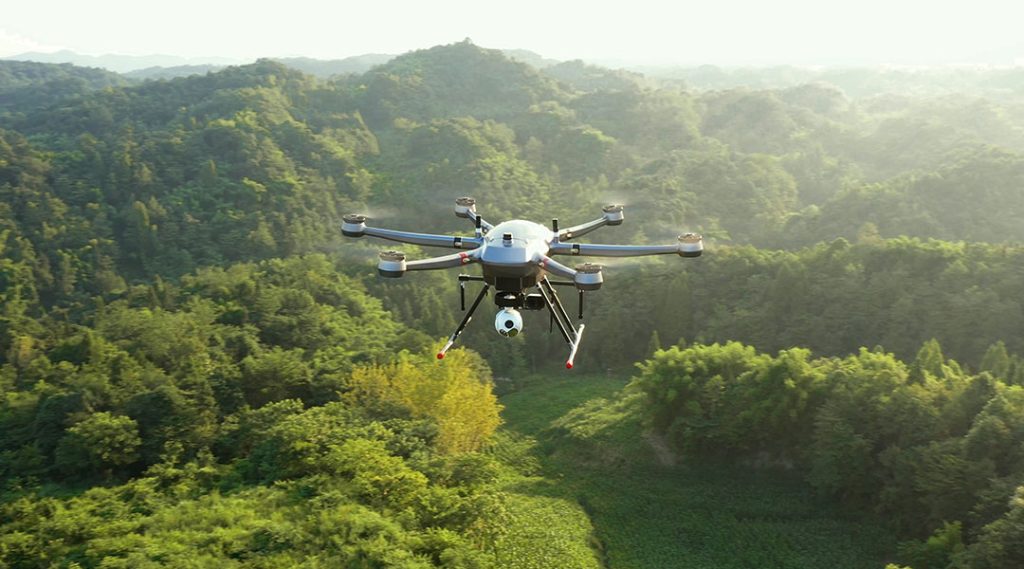
Tips for Backfilling a Foundation
Here are some key tips to keep in mind for a successful backfilling process:
- Allow the foundation to cure for at least 5-7 days before backfilling. This curing time is essential to prevent cracks from developing due to pressure from the backfill material.
- Before backfilling commences, ensure the area is free of debris like grass, loose stones, and rubbish. Standing water should also be pumped or bailed out to create a dry and stable base for the backfill.
- Some types of soil retain too much moisture and are unsuitable for backfilling. Opt for well-draining materials like crushed stone, gravel, or clean, compacted soil from the excavation (minus large rocks and debris).
- Reusing the excavated soil for backfill can be cost-effective. However, ensure it's free of large rocks, vegetation, and other unwanted elements.
- Begin backfilling at the corners of the foundation and work your way inward. This ensures the even distribution of soil and provides optimal lateral support for the structure.
- Backfill in manageable lifts of 15-20 cm each. This allows for proper compaction of each layer before adding the next.
- After each layer is placed, thoroughly compact the soil using a tamper or mechanical compactor. Proper compaction minimizes settling and ensures a stable foundation.
- Maintaining the right moisture content in the backfill material is essential. Soil that's too dry won't compact properly, while excessively wet soil might lead to settling later. Adjusting moisture levels may be necessary depending on weather conditions.
- Ensure proper drainage around the foundation to prevent water accumulation. This can be achieved by incorporating French drains, using well-draining backfill materials, or sloping the terrain away from the structure.
- Regular testing of the backfill material, such as Proctor compaction tests, helps determine the optimal moisture and density levels for proper compaction. This ensures the backfill meets specified standards and contributes to the overall structural integrity of the building.
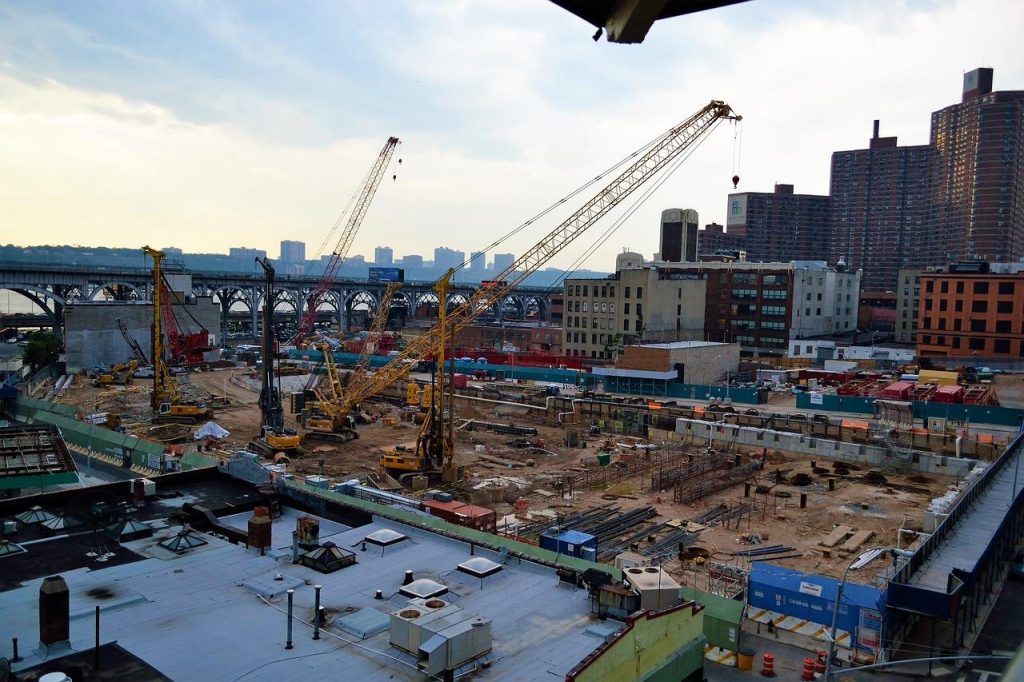
How Much Does It Cost To Backfill A Trench?
The average cost of backfilling a trench per linear foot ranges from $4 to $12 for residential projects. However, complex projects with challenging conditions could go up to $20 or more per linear foot.
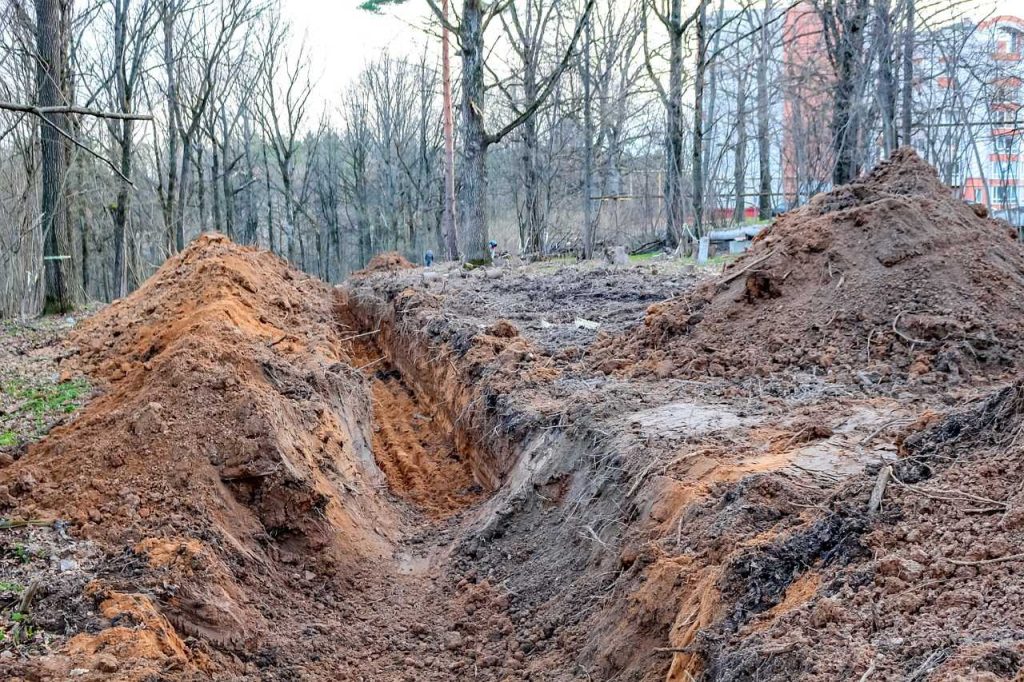
However, figuring out the exact cost can be tricky due to several influencing factors. Here's a breakdown of what impacts trenching and backfilling costs:
- Trench Length and Depth: Longer and deeper trenches increase costs due to more time, labor, and potentially larger equipment.
- Soil Conditions: Hard, rocky soil requires specialized equipment and more labor, impacting costs compared to soft, loose soil.
- Underground Utilities: Existing utilities add complexity and cost to trenching, requiring careful excavation methods and permits.
- Equipment Rental: Costs depend on project scale and soil conditions, with larger equipment having higher rental rates.
- Material Selection: Backfill material choice affects costs, with crushed stone or gravel typically costing more than using excavated soil, but soil suitability for backfilling must be considered.
- Hauling Costs: Disposal or importation of backfill material adds to expenses.
- Compaction Needs: Higher compaction levels increase labor and equipment time, affecting costs.
- Permits: Trenching and backfilling permits, if required, contribute to overall project costs.
- Labor Rates: Geographic labor variations impact trenching and backfilling costs.
FAQ
What is the Difference Between Filling and Backfilling?
Filling is a broader term that refers to adding material to an area to generally raise the ground elevation or create a level surface. It can be done in various situations and doesn't necessarily involve any specific structures. Think of filling in a low spot in your yard or raising the ground level for a new garden bed.
While backfilling is a more specific term used in construction. It refers to the process of filling in the excavated area around a foundation after the foundation has been poured and cured. The primary purpose of backfilling is to provide support and stability for the foundation walls.
Is Sand Good for Backfilling a Foundation?
While sand might seem like a suitable option due to its drainage properties, it's generally not recommended for backfilling foundations. Here's why:
Poor Compaction: Sand doesn't compact as well as gravel or crushed stone, leading to a less stable foundation base.
Erosion Potential: Sand is susceptible to erosion from water runoff, potentially compromising the foundation's support over time.
Lateral Support Concerns: Similar to gravel in sandy soils, sand may not provide adequate lateral support for the foundation walls.
Can Wood Chips be Used for Backfilling?
Wood chips are generally not suitable for backfilling foundations due to several reasons:
Decomposition: Wood chips decompose over time, creating voids and leading to settling around the foundation. This can compromise the foundation's stability.
Moisture Retention: Wood chips tend to retain moisture, which can create unwanted moisture conditions around the foundation.
Pest Attraction: Wood chips can attract termites and other pests, posing a potential threat to the foundation structure.
How Much Dirt Should I Leave When Backfilling?
Don't leave any significant amount of dirt unfilled around the foundation. The backfill should reach the level specified on the foundation plans, typically just below the top of the foundation wall or slab. Leaving a gap can compromise the foundation's stability and expose it to potential water damage.
How to Calculate Backfilling Quantity?
Here's an easy way to estimate the amount of backfill material you'll need:
Backfill volume (in cubic yards) = Length (in feet) x Width (in feet) x Depth (in feet)
Just make sure to convert all measurements to feet to keep things consistent. It's important to note that this formula gives you an estimate. It's a good idea to add an extra 10-15% to allow for material waste and compaction.





